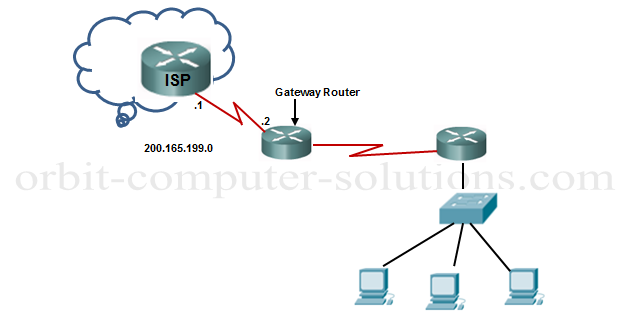What is Default Route?
A Default Route, often referred to as a “gateway of last resort,” is a setting or configuration in a computer network that tells the network router or switch how to forward packets to destinations for which it does not have a specific route.
In simpler terms, it’s the path used by a router when it doesn’t have a better route for a packet or a given Internet Protocol (IP) destination address.
Let’s break down the concept:
Routing Basics:
Routers and Routing Tables: Routers use routing tables to make decisions about forwarding packets. These tables contain information about specific paths to various network destinations.
Specific Routes: If a router has a specific route to a destination (like a route to a particular network or subnet), it uses that route to forward the packet.
Role of a Default Route:
Fallback Option: When a router receives a packet destined for a network that isn’t in its routing table, it sends the packet to the default route.
Simplification: It simplifies the routing table by providing a single, general path for all unknown destinations.
Configuration:
Typically an IP Address: The default route is usually configured as an IP address of another router on the network. This router is assumed to know more about the external networks.
Common in Edge Routers: In home and small business networks, the default route is often set to the IP address of the router provided by the Internet Service Provider (ISP).
You can configure or use default routes to direct packets addressed to destinations or networks not found or listed in the routing table. This is more workable in a stub network (networks with one exit path).
To configure a default route, you will use wildcards in the network address and mask. Using the default route helps to reduce the complex work of configuring all the assigned routes
When you as the network administrator create a static route to network 0.0.0.0 0.0.0.0, this is another way of setting the gateway of last resort on a router. However, IP routing must be enabled on the router, if not; it’s advisable to use the ip default gateway command:
Gateway#ip default-gateway 200.165.199.1
How To Configure Default Route
The following topology and configuration command examples, help to explain how to configure a default route or gateway of last resort:

Use the following command to configure a default route on the gateway router:
Gateway(config)#ip route 0.0.0.0 0.0.0.0 200.165.199.1
Gateway(config)#
Verify your configuration
Gateway#show ip route
[Output omitted]
Gateway of last resort is 200.165.199.1 to network 0.0.0.0
10.0.0.0/30 is subnetted, 1 subnets
C 10.10.11.0 is directly connected, Serial0/0/0
172.16.0.0/24 is subnetted, 1 subnets
S 172.16.10.0 [1/0] via 10.10.11.2
C 192.168.30.0/24 is directly connected, FastEthernet0/0
S* 0.0.0.0/0 [1/0] via 200.165.199.1
Gateway#
You can check the routing table using the show ip route command as above, you will find directed connected networks plus the S*, this shows the entry for the default route. you can also notice that the gateway of last resort is now set in the routing table as shown above.
What the default network meant is to forward any packet for an unknown network out 200.165.199.1, which is the next hop router.

